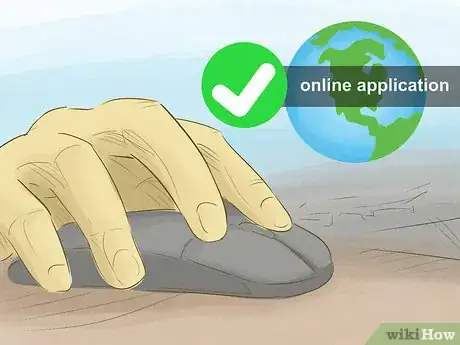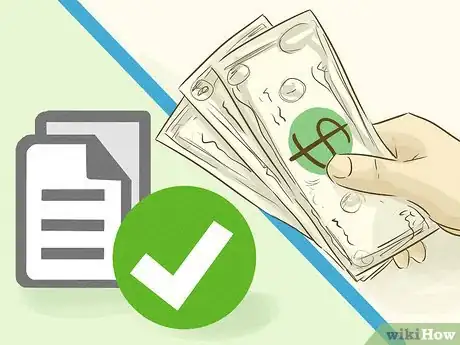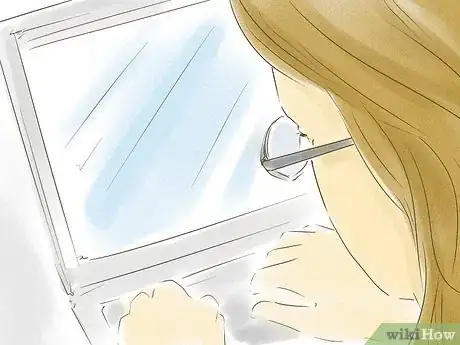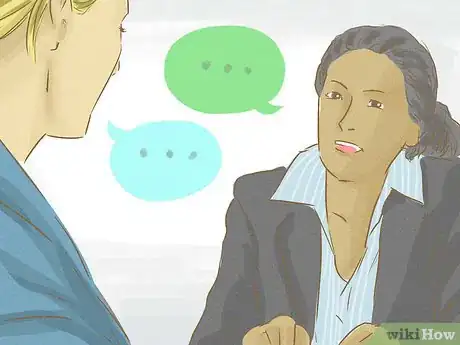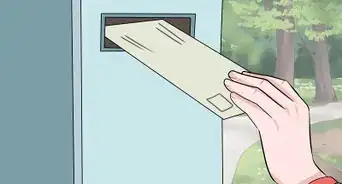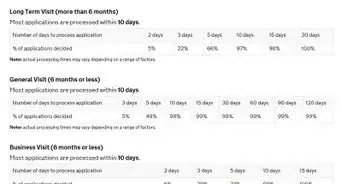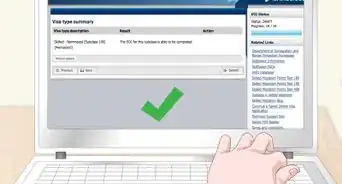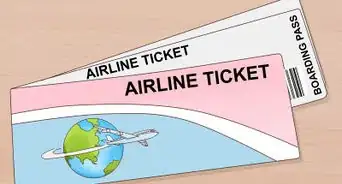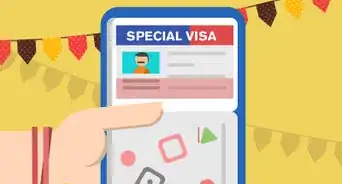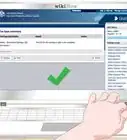wikiHow is a “wiki,” similar to Wikipedia, which means that many of our articles are co-written by multiple authors. To create this article, 10 people, some anonymous, worked to edit and improve it over time.
There are 8 references cited in this article, which can be found at the bottom of the page.
This article has been viewed 43,847 times.
Learn more...
Applying to live and work in many Commonwealth countries (including Canada, Australia, and New Zealand) requires submitting a document called an expression of interest (or EOI). Though EOIs will vary from country to country, in general, they're used to tell the host country about yourself, your family, and your work experience.[1] Often, an EOI comes before even the formal application stage of gaining a visa. Because it's such an early part of the process, it's important to complete your EOI thoroughly and accurately to give yourself the best possible chance of eventually being admitted.
Steps
Preparing to Write an Expression of Interest
-
1Make sure your occupation is eligible for a visa. In general, most host countries prefer to give work visas to people with high-skill, high-demand occupations. This is to ensure that people entering are providing a net benefit to the host country that couldn't necessarily be provided by a native citizen. For this reason, some countries will only award work visas to people in certain professions. Before beginning the process of filling out an EOI, double-check to make sure your occupation
- This information will usually be available from the relevant immigration agencies in your host country. For instance, in Australia, the Department of Immigration and Border Protection publishes an online list of visa-eligible occupations called the Skilled Occupation List (SOL).
-
2Make sure you're applying for the correct visa. The visa application process can be a long, drawn-out, and tricky one. You definitely don't want to accidentally waste time and effort applying for a visa that won't provide the sort of protection that you and your family need to live and work in your host country. If you're even a little unsure of which visa you should apply for, don't begin without making sure.
- Usually, your host country will publish easy-to-understand visa information for visa applicants online. For instance, the Australian Department of Immigration and Border Protection's website offers a "Find a Visa" utility that allows you to easily input your personal information to find the visa(s) you should apply for.[2]
- Alternatively, try contacting the nearest embassy or consulate of your host country directly.
Advertisement -
3Gather all necessary supporting documentation. For some countries, the EOI serves only as an initial screening step to the visa application process, so you won't need any sort of official documentation to complete your EOI. For other countries ,however, you may need to include this sort of documentation as part of your EOI. In this case, be sure to have any needed documents before starting. Things like birth certificates, employment records, and so on can take time to obtain, so request them as early as possible to help keep your EOI writing process relatively quick.
- Usually, you'll be able to find this information either on the EOI form itself or from online government sources. For example, the Australian government occasionally publishes changes to documentation requirements on its official blog.
-
4Be prepared to pay any application fees. Unfortunately, many (if not nearly all) EOI forms will require the applicant to pay a processing fee to submit the form. These can vary greatly depending on which visa you're applying for, how big your family is, where you currently live and what your occupation is. Be sure to have this money ready by the time you finish your EOI — usually, processing won't begin until you pay the fee.
- If you can't find the application fee on your EOI document, most immigration agencies will publish this online. For instance, the government of New Zealand offers an online utility that allows visitors to find exactly where they'll need to submit their forms and how much they'll need to pay by inputting their personal information.[3]
- As an example of the wide range of fees you may be asked to pay, a skilled migrant applying for resident status in New Zealand will need to pay about NZ$1,550 if he is from Australia or the pacific. However, if he is from the rest of the world, he may need to pay about NZ$2,400.[4]
Writing an Expression of Interest for a Visa
-
1Provide any personal information requested. Nearly all EOI forms will require you to supply a wide range of personal details. For instance, in addition to basic information like your name and address, you'll probably be asked for your marital status, your salary, your level of application, your tax obligations, and more. Supply this information as thoroughly and as accurately as you can as you fill out the form.
- In addition, be prepared to provide extensive information on anyone who might come to the host country with you, including your family and/or spouse.
- Never lie or neglect to disclose important information on your EOI on purpose. Knowingly deceiving your host country's government can immediately disqualify you from visa eligibility, seriously hindering your ability to work there in the future.
-
2List qualifications and experience as directed. Beyond basic personal information, much of what you'll be asked to supply in your EOI will have to do with your current job and any past work history. Supply this information to the best of your information as requested. It can be very helpful to use a recent resume, curriculum vitae, or tax return to help you with this process. Don't be afraid to contact old employers to get any necessary information if needed.
- Because visas are preferentially given to migrants with high-skill occupations, in general, you'll want to emphasize skills and work experience that are in short supply in your host country. For this reason, your chances of getting a visa are usually best if you currently work in one of these sorts of positions and have a good amount of relevant experience in your field.
- For instance, here are just a few of the occupations listed on Australia's Skilled Occupation List (SOL): actuary, chemical engineer, surveyor, naval architect, medical radiation therapist, sonographer, dental specialist, systems analyst, and social worker.[5]
-
3When prompted, explain why your job is a highly-valued one. Eventually, many EOIs will ask you write a brief description of why, exactly, you're such a valuable candidate. Keep in mind that your ultimate goal with an EOI is to paint yourself as someone whose skills are in high demand — someone who can do a job that there aren't enough native citizens to fill. With this in mind, clearly and succinctly explain how your particular occupation requires lots of training or specialized knowledge and is something that there is a great demand for.
- For example, the EOI form for New Zealand asks applicants to "explain how [their] job is skilled [and] give a detailed reason in support of their claim..."[6] In this case, in addition to the strategies above, it can be useful to consult supporting documents (like, for New Zealand, the Skilled Migrant Category EOI Guide)[7] to find the host country's official definition of what a skilled occupation is. Then, on the EOI form, use this information to give specific examples of how your job is a skilled one.
-
4Have your family members fill out their own forms as needed. Nearly all EOI forms will ask you for detailed information on your family and/or spouse. In addition to supplying this information yourself, your family members will often need to fill out their own supplemental forms for the EOI application to be considered complete. If they're too young to do so, you may still need to fill out a form for them. Unfortunately, these additional forms can sometimes have their own application fees.
- For example, visa applicants to New Zealand who wish to apply as parent of an adult New Zealand resident (rather than as skilled migrants) must fill out a separate form called the Parent Category EOI.[8]
-
5If necessary, get an English-speaker to help you write. If you're applying for a visa to an English-speaking country, there's a reasonable chance that you don't yet have full knowledge of the language. If you're not a good enough reader and writer of English to fill your own form out, it's usually acceptable to get help from a fluent English speaker or translator to help you. Often, you'll need to disclose this person's identifying information on your EOI form.
- For instance, visa applicants to Australia who get a translator outside Australia to help them must provide their translator's name, address, contact information, and give their qualifications as a translator. If the translator is from inside Australia, this person must be accredited by the National Accreditation Authority for Translators and Interpreters.
-
6Carefully review your EOI before submitting. When you're done with your EOI, give it a thorough check for errors, misspellings, and omitted information before submitting. Filling out your form incorrectly can can lead to it not being accepted, costing you even more time and money during your application process as you re-apply.
- Usually, your EOI form will contain information about where exactly to mail it. For instance, EOIs for visas to New Zealand must be sent to the official Immigration offices in the capital of Auckland.[9]
Community Q&A
-
QuestionI am applying for PR to Australia and I am in the process of completing my skills assessment with the Visa agency. I am divorced, with an official divorce decree, but I don't have custody papers for my 10-year-old child. Will I be allowed to immigrate with my child?
 Community AnswerYou will have to get papers for the child that say that he is in your custody before immigrating.
Community AnswerYou will have to get papers for the child that say that he is in your custody before immigrating.
Warnings
- EOI application fees can't be paid in cash — usually, credit card or bank check are the only acceptable options.⧼thumbs_response⧽
- Keep in mind that the waiting period for your EOI to be approved can be quite long. In New Zealand, EOI queues can range anywhere from about 18 months to seven years.[11]⧼thumbs_response⧽
References
- ↑ http://www.immigration.govt.nz/migrant/stream/work/skilledmigrant/apply/
- ↑ http://www.immi.gov.au/Visas/Pages/Find-a-visa.aspx#vw=%23a_intro
- ↑ http://www.immigration.govt.nz/migrant/stream/work/skilledmigrant/LinkAdministration/ToolboxLinks/officeandfeescalculator.htm?level=1
- ↑ https://www.immigration.govt.nz/documents/forms-and-guides/feesguide.pdf
- ↑ http://www.immi.gov.au/Work/Pages/skilled-occupations-lists/sol.aspx
- ↑ https://www.immigration.govt.nz/documents/forms-and-guides/inz1100.pdf
- ↑ https://www.immigration.govt.nz/documents/forms-and-guides/inz1101.pdf
- ↑ https://www.immigration.govt.nz/documents/forms-and-guides/inz1207.pdf
- ↑ https://www.immigration.govt.nz/documents/forms-and-guides/inz1207.pdf
About This Article
Before you fill out your Expression of Interest, or EOI, do some research to ensure your occupation is visa-eligible. You will also have to pay fees, which can vary widely, but may be $1500 or more. The EOI form will ask about your dependents, education, and work history. Plan to write a statement explaining why your job is in demand. Make sure to carefully review your work for errors before submitting it. For more on bringing family members and resources for finding the correct visa, keep reading!

